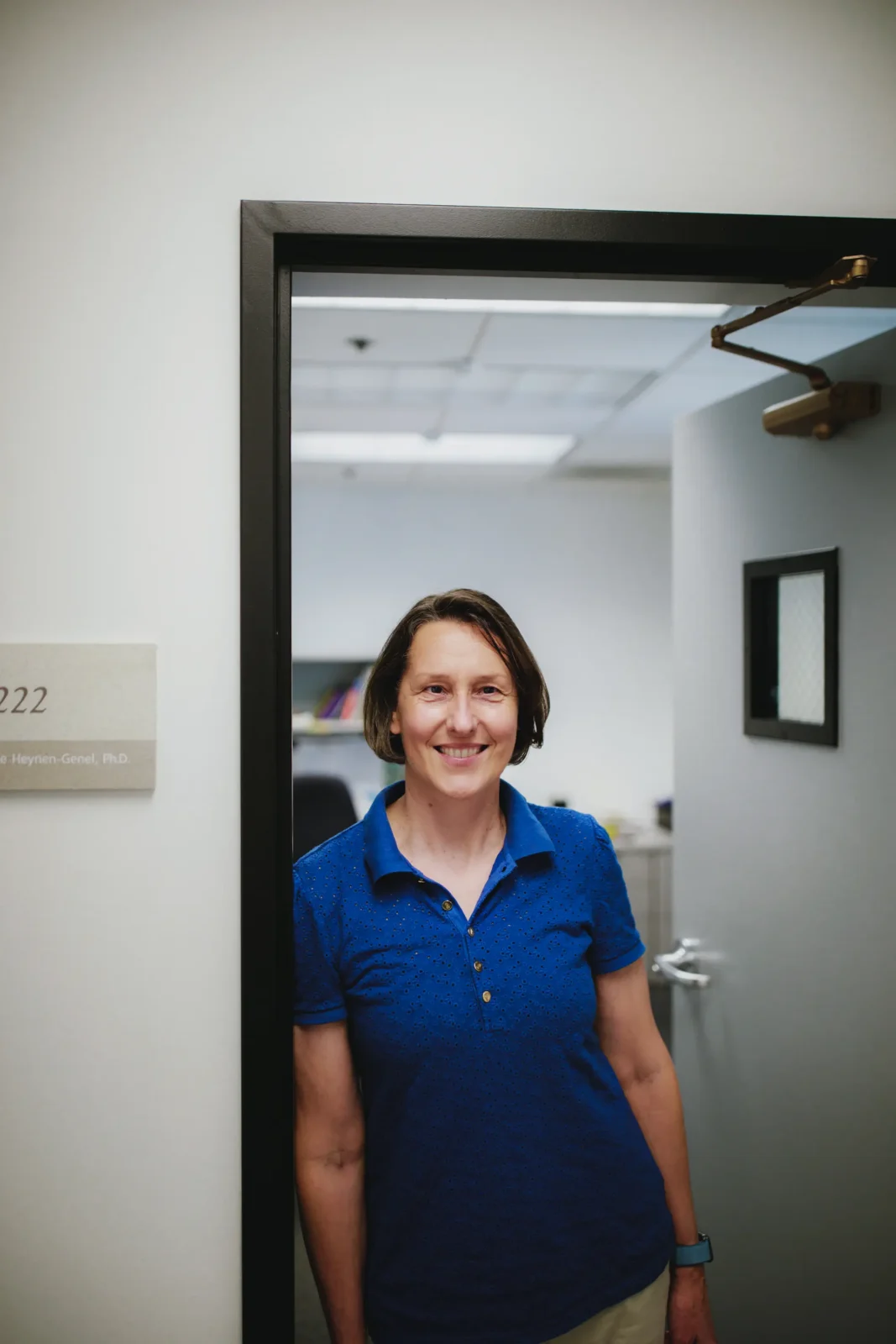Dr. Susanne Heynen-Genel has over 20 years of experience in image-based screening systems, including automated microscopy instrumentation, image analysis, algorithm development, and HCS assay design. She has been directing development and execution of image-based high-content assays for high-throughput screening (primary screens of large chemical and RNAi libraries) and small scale screening (secondary assays, focused libraries assays for validation of basic research findings) for ten years at the Conrad Prebys Center for Chemical Genomics.
Prior to joining Sanford Burnham Prebys, Susanne was a staff systems scientist at Beckman Coulter, where her responsibilities included system design and integration of high-content screening systems and applications. Previous to that she was an applications scientist for high-throughput microscopy systems at Q3DM until its acquisition by Beckman Coulter. She spent a year as postdoctoral researcher at the University of California in San Diego where she also received her PhD in Bioengineering in 2002. Her graduate student research focused on optimizing fluorometric performance of high-throughput microscopy systems to yield more accurate quantification. This work was incorporated in an image-based HCS platform commercialized first by Q3DM Inc. and then by Beckman Coulter. The accompanying image and single cell data analysis and classification work, initially aimed at detection of cancer cells for cytodiagnostics and presented at conferences, was on the forefront of high-throughput imaging analysis at the time and similar analyses algorithms have more recently been incorporated in commercial HCS image analysis software packages.
Techniques and Technologies
Assay Development, High Content Imaging, Phenotypic Screening, Technology Development
Dr. Heynen-Genel has a multidisciplinary research background, including instrumentation, cell biology, computer programming / software, systems engineering, and multi-variate data analysis. She has been at the forefront of development of the image-based high content screening technology, and has been conducting applied science in phenotypic assay development and screening for over two decades. Her graduate and post-graduate research focused on development and validation of an automated microscopy system followed by its application for cytopathology. This included image analysis, pattern recognition and data mining to take full advantage of the multivariate nature of image-based high-content data. With the maturation of the image-based high-throughput screening technology, she shifted her focus to the application of this exciting new platform to drug discovery – specifically focusing on target identification / validation and phenotypic screening campaigns. In this field, Susanne has collaborated on countless research projects to conceive, design and execute image-based assays applied in small to medium-scale functional genomics and small molecule screens, done with both Sanford Burnham Prebys-based PIs as well as PIs from other academic institutions in the US and abroad.
These projects have been instrumental in identifying or validating new targets for characterization and improved understanding of various diseases and for drug discovery. Susanne’s primary research interests and one of her motivations for joining the Institute was to take on the challenge of creating an image-based HCS infrastructure, which would push image-based high content screening to applications in large-scale campaigns. The immense success of this endeavor is documented by Sanford Burnham Prebys having been selected as the screening center of choice for image-based HCS projects of the NIH Molecular Libraries Program (MLP). Her successful implementation and constant streamlining of the Institute’s high content imaging platform has led to the institute, and specifically the Prebys Center, to be known as one of the few top academic institutes routinely executing image-based screening campaigns of up to 600,000 small molecule compounds in 384- and 1536-well formats, thus fostering collaboration requests for image-based screening projects from across the country.
More recently, Susanne has focused on enabling large-scale HCS campaigns using endogenous proteins instead of reporter-based overexpression systems and using more and more biologically relevant systems to better represent the disease phenotypes. The recent reemergence of phenotypic screening as an important approach for discovery of novel classes of drugs combined with new developments in biological models and screening technologies have increasingly brought biological relevance to phenotypic high-throughput screening. Balancing the complexity of the assay systems with screening throughput and chemical compound diversity is a challenge that needs to be specifically tailored for each new assay target and drug discovery screening project. The most recent research focus is on taking full advantage of the highly multiplexed and multi-variate nature of the imaging assay systems, especially when applied as functional secondary or profiling assays.
